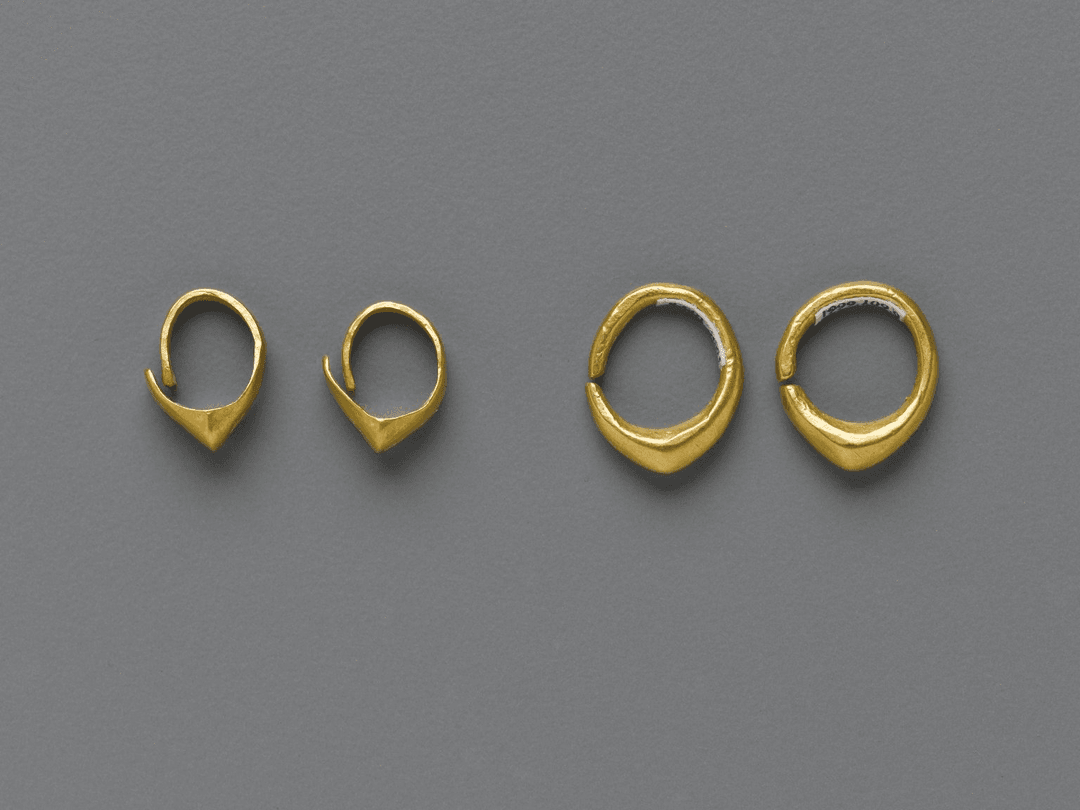Earrings, one of the most ancient forms of body adornment, have a rich history that spans thousands of years. From ancient civilizations to contemporary fashion, earrings have evolved in style, material, and cultural significance. This journey through time reveals how these accessories have been used for both decorative and symbolic purposes.
Ancient Origins of Earrings
Early Beginnings
The earliest evidence of earrings dates back to around 2500 BCE in ancient Sumeria (modern-day Iraq). These early earrings were typically made of gold and were simple hoop or spiral designs. They were often worn by both men and women as a symbol of wealth and status.

Egyptian Influence
In ancient Egypt, earrings were a significant part of fashion and culture. Egyptians adorned themselves with elaborate earrings made from gold and adorned with precious stones. These earrings were not only decorative but also held spiritual significance, believed to protect the wearer from evil spirits.

Greek and Roman Eras
During the Greek and Roman periods, earrings became more intricate and artistic. Greek earrings often featured complex designs such as coiled snakes and other motifs inspired by nature and mythology. Roman earrings, on the other hand, showcased advancements in metalworking techniques, allowing for more detailed and ornate pieces, often set with gemstones.
Middle Ages to the Renaissance
Medieval Times
In medieval Europe, earrings fell out of favor due to the influence of the Christian Church, which associated body adornments with vanity. However, they continued to be worn in other parts of the world, such as the Byzantine Empire, where elaborate and jeweled earrings were popular among the nobility.
Renaissance Revival
The Renaissance period saw a revival of earrings in Europe, particularly among the wealthy. Earrings became a key component of the elaborate and opulent fashion of the time. Pearls were especially favored, symbolizing purity and wealth. This era also saw the introduction of new designs, such as the pendant earring, which dangled from the earlobe and often featured intricate enamel work and gemstones.
18th to 19th Century
Georgian and Victorian Eras
The Georgian era (1714-1837) brought about a fascination with romantic and natural motifs. Earrings from this period often featured designs inspired by flowers, bows, and hearts. They were typically crafted from gold and adorned with precious stones like diamonds and sapphires.
The Victorian era (1837-1901) further popularized earrings as essential fashion accessories. Queen Victoria's influence led to the widespread use of sentimental motifs, such as lockets and cameos, in earring designs. Mourning jewelry, made from jet or black enamel, also became popular following the death of Prince Albert.
Art Nouveau and Art Deco
The turn of the 20th century introduced the Art Nouveau movement, characterized by its flowing lines and nature-inspired designs. Earrings from this period often featured motifs like flowers, insects, and mythical creatures, crafted from materials like gold, enamel, and semi-precious stones.
The Art Deco era of the 1920s and 1930s brought a shift towards geometric shapes and bold colors. This period was marked by the use of platinum and white gold, along with diamonds and colored gemstones, reflecting the glamour and sophistication of the Roaring Twenties.
Modern Era
Mid-20th Century
The mid-20th century saw a mix of influences, from the elegant pearl studs favored by First Lady Jacqueline Kennedy to the bold, oversized styles of the 1960s and 1970s. The rise of fashion icons and celebrities played a significant role in popularizing various earring trends.
Contemporary Styles
Today, earrings continue to evolve, with designers experimenting with new materials and innovative designs. Minimalist styles, such as simple studs and delicate hoops, coexist with extravagant statement pieces. Sustainability has also become a key trend, with many designers using recycled materials and ethically sourced gemstones.
Earrings in Popular Culture
Celebrity Influence
Celebrities have always played a crucial role in shaping earring trends. From Marilyn Monroe's dazzling diamond earrings to the iconic pearl studs of Princess Diana, celebrity styles often influence public preferences and drive fashion trends.
Cultural Significance
Earrings hold cultural significance in many societies. In India, earrings are an essential part of traditional attire, often symbolizing marital status and social standing. In African cultures, earrings made from natural materials like wood and bone are commonly worn and hold cultural and spiritual meanings.
Conclusion
The history and evolution of earrings reflect broader changes in society, fashion, and technology. From ancient gold hoops to modern sustainable designs, earrings have remained a constant in the world of adornment, symbolizing beauty, status, and personal expression. As fashion continues to evolve, so too will the styles and significance of this timeless accessory.
FAQs
How did earrings originate? Earrings originated around 2500 BCE in ancient Sumeria, primarily as simple gold hoops or spirals worn by both men and women as symbols of wealth and status.
What were earrings made of in ancient Egypt? In ancient Egypt, earrings were made from gold and adorned with precious stones. They held both decorative and spiritual significance, believed to protect the wearer from evil spirits.
How did the Renaissance influence earring designs? The Renaissance saw a revival of earrings in Europe, particularly among the wealthy. Earrings became elaborate and opulent, with a focus on pearls, enamel work, and intricate pendant designs.
What characterized Art Deco earrings? Art Deco earrings of the 1920s and 1930s featured geometric shapes, bold colors, and materials like platinum and white gold, reflecting the glamour and sophistication of the era.
How have modern earring trends evolved? Modern earring trends are diverse, ranging from minimalist styles to extravagant statement pieces. Sustainability has become important, with designers using recycled materials and ethically sourced gemstones.
What role do celebrities play in earring trends? Celebrities significantly influence earring trends. Iconic styles worn by celebrities often become popular among the public, driving fashion trends and preferences.
Would you like to see our products inspired by antique earrings?
Check our Etsy account or web site!